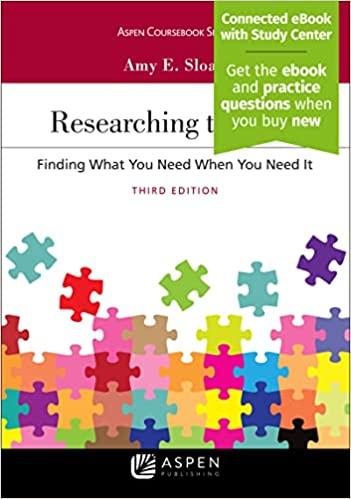Corparate laws
Question 4 (1 point) During the Constitutional Convention, a "departmentalist" was someone who believed that O each branch of the new government would interpret the Constitution as it applied to its own actions rather than having the Supreme Court be the sole interpreter of the Constitution. O the Supreme Court should be the sole interpreter of the Constitution and that each branch of the new government would have its actions subjected to strict judicial scrutiny. O the new government should have only two branches-the executive and the legislative-and no judiciary. C the judiciary should appoint its own justices and the president should not be empowered to nominate Supreme Court justices.20. Which of these organizational characteristics does the chain of command refer to? Division of labor Span of control Communication channel Impersonality e. Hierarchy of authority establishes the chain of command in an organization chart. Vertical hierarchy b. Downward communication The corporate charter 1. Horizontal specialization U The mission statementPar value of common stock is established for a share of stock after it is issued. Q represents the original selling price for a share of stock. O represents what a share of stock is worth. is the value assigned per share in the corporate charter. QUESTION 2 All of the following statements regarding retained earnings are true except O retained earnings represents a claim on cash. a debit balance in Retained Earnings indicates a deficit. retained earnings is net income that a company retains in a business. retained earnings are a cumulative measure. QUESTION 3 The net effects on the corporation of the declaration and payment of a cash dividend are to decrease assets and decrease stockholders equity. increase stockholders' equity and decrease liabilities, increase assets and increase stockholders' equity. decrease liabilities and decrease stockholders equity. Click Save and Submit to save and submit. Click Save All Answers to save all answers. 9QUESTION 6 The following information pertains to Benedict Company. Assume that all balance sheet amounts represent average balance figures. Total assets: $300,000 Common stock: $125,000 Retained earnings: $25,000 Sales Revenue: $100,000 Net Income: $32,000 Common stock shares outstanding:4,000 Common dividends: $5,000 What is the return on common stockholders' equity ratio for Benedict? 25.6% 13.3% O 21.3% 10.79%Instructions 100 Pre Quiz 3. There are a total of 3 points and 3 multiple choice questions. You will be pe nd take this quiz only ONCE and you must complete it within the 15 minute time limit. Quiz dual exercise and you must do your OWN work. However, you may use your text or class no he SUBMIT QUIZ BUTTON when you have finished. Question 1 1 pts Keisha and Donnie decide to go into business together. They start by writing an agreement explaining the terms of the business they will both own, along with each of their responsibilities. Keisha and Donnie created a(n): O articles of partnership. business license. licensing agreement. corporate charter. patent application. Next 18 MacBook











